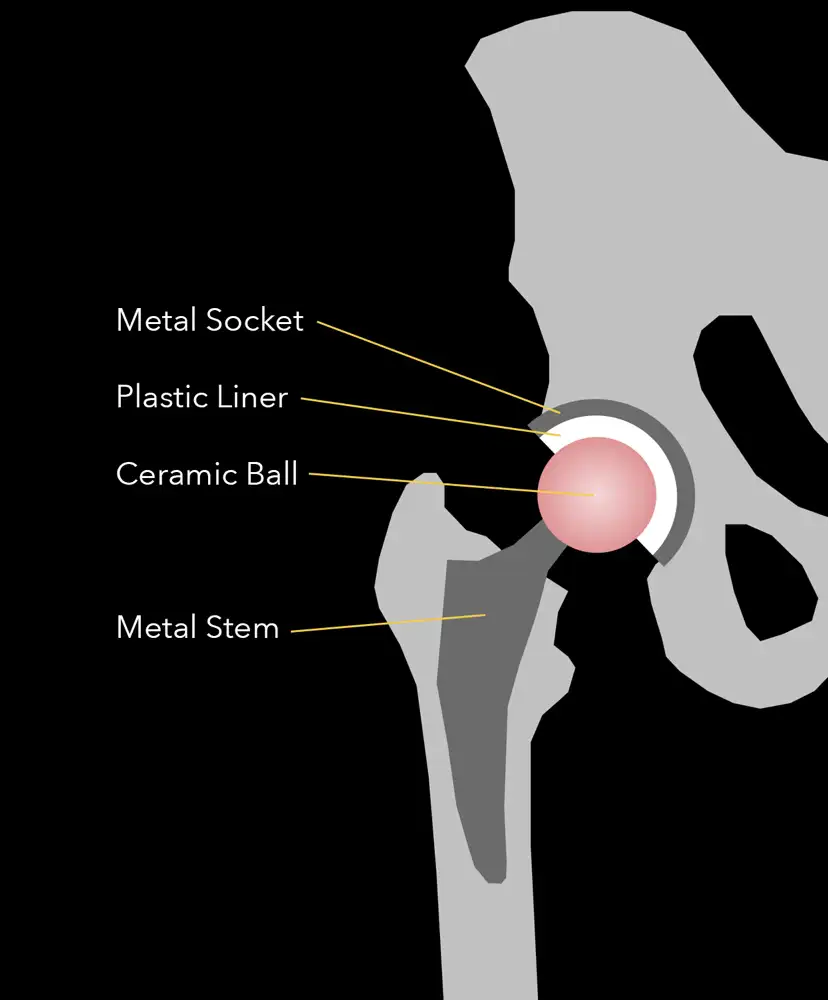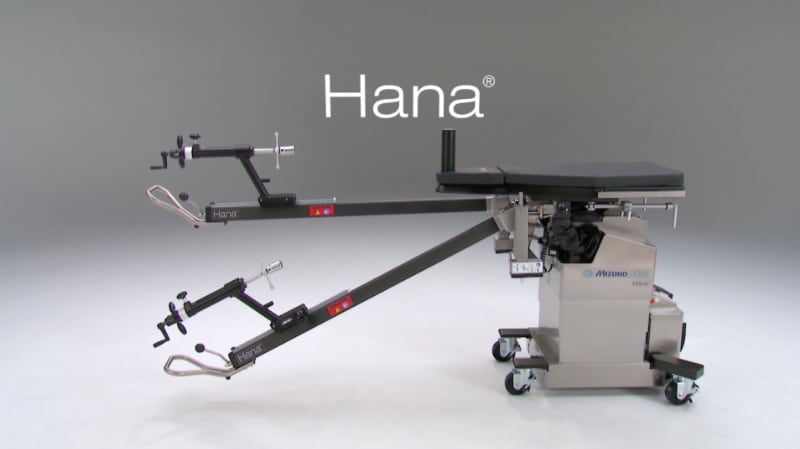
Hip replacement is a predictable and reliable operation to relieve the symptoms of hip arthritis. It is one of the most successful surgical procedures in medicine and was called a miracle of modern medicine by a leading medical journal 50 years after its introduction.
During this procedure, the damaged bone and cartilage of the hip is removed and replaced with prosthetic implants.
The deteriorated femoral head is removed and replaced with a metal stem. This stem is “press fit” or cemented into the center of the femur (thigh) bone. On the upper portion of the metal stem, either a metal or ceramic ball is placed.
This ball acts as the new femoral head. To replace the socket (acetabulum), the damaged cartilage is removed and a metal socket is placed.
Sometimes, cement or screws are used to secure the socket. A dense plastic liner is placed between the new socket and ball, allowing for smooth movement of the new joint.
Anterior Approach Hip Replacement
The anterior approach for hip replacement is minimally invasive technique that can make the early recovery after surgery better. This is because the anterior approach is a "muscle sparing" approach to the hip. During an anterior approach, Dr. Maratt makes a small incision near the front of the hip and works between muscles to access the joint without damaging any muscles or tendons.
In contrast, traditional approaches to hip replacement like the posterior approach, even when performed though a small incision, requires splitting apart the gluteus maximus - the largest muscle in your body.
Why the Anterior Approach for Hip Replacement?
- It is a minimally invasive, muscle sparing approach to hip replacement.
- An excellent option to reduce pain and enable a quicker recovery.
- Not all hip surgeons perform the anterior approach because it was adopted for hip replacement more recently and it is perceived to be more technically demanding.
- In the hands of an experienced surgeon, the anterior approach is a versatile and safe approach to the hip joint.
Dr. Maratt completed his joint replacement fellowship training in 2014, while the anterior approach was becoming more widely utilized for hip replacement. He benefited from being trained in the anterior approach by leaders in the field and then visited with surgeons around the country to further refine his technique.
Dr. Maratt is an expert in anterior approach hip replacement and has been using the approach for all hip replacement procedures due to the numerous benefits it offers patients during their recovery and the surgeon during the procedure.

Anterior approach hip replacement is performed on a specialized orthopedic table that facilitates stable positioning of the patient during surgery and allows for the utilization of x-ray as needed during the procedure to ensure ideal position of the implants. Dr. Maratt utilizes the Mako Robot during anterior approach hip replacement to further improve the process of bone preparation to place the implants in the ideal position for each patient.
What are the risks of Anterior Approach Hip Replacement?
Hip replacement is one of the most predictable and safest operations. It is an effective operation to relieve pain from hip arthritis. However, all surgical procedures carry some risk.
One risk of hip replacement surgery is hip dislocation, especially during the early weeks after recovery. The muscles and soft tissues around your hip joint play a role in preventing hip dislocation and are preserved during hip surgery using the anterior approach. Because of this you are less likely to dislocate your hip replacement performed through the anterior approach.
One risk of surgery unique to the direct anterior approach is a numbness of the skin in the front of your thigh. This can occur because of stretching in the skin nerves that pass by the skin incision. It typically resolves after a few months.
The risks of hip replacement have much less to do with the surgical approach than with the patient’s general health. It is important to talk to your surgeon about your overall health when considering hip surgery. To reduce these risks as much as possible, all our patients who need surgery are seen by a medical doctor during pre-op testing. This doctor will work with your other doctors to optimize management of medical conditions around surgery.
Hip Pain Hip Arthritis Robot Assisted Hip Replacement